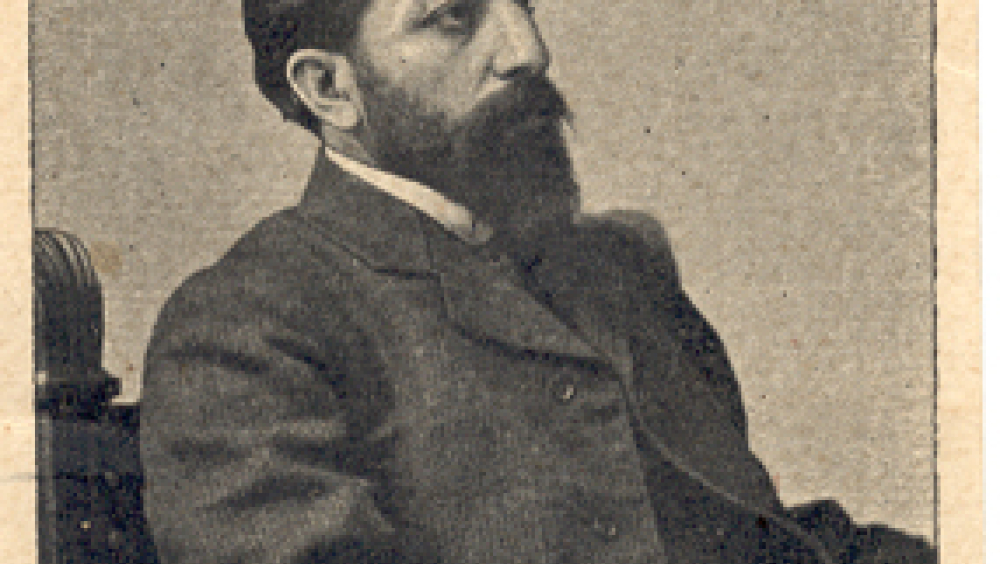Exploring Avetik Isahakyan's Literary Heritage: The Cultural Impact of the Poem 'Abu-Lala Mahari
he story delves into Isahakyan's fascinating life, from his extensive travels across Europe to his pivotal role in the national liberation movement. The House-Museum not only preserves his personal artifacts but also serves as a dynamic hub for non-formal education, cultural events, and celebrations. Each year, the museum becomes a focal point during European Heritage Days, weaving together Isahakyan's narrative with the broader tapestry of European cultural history.
At the heart of this exploration is Isahakyan's magnum opus, the poem "Abu-Lala Mahari," a work deeply influenced by his experiences and philosophical reflections. The poem's historical prototype, a medieval Arab poet disillusioned with the world, serves as a literary device embodying Isahakyan's profound thoughts on mankind, justice, and the human condition.
"Exploring Avetik Isahakyan's Literary Heritage: The Cultural Impact of the Poem 'Abu-Lala Mahari'" not only unravels the intricacies of Isahakyan's artistic genius but also underscores the universal themes within his work. The poem, translated into over twenty languages, resonates as a poignant and timeless expression of grief, desolation, faith, and rebellion.
Join us on this illuminating journey through Isahakyan's literary landscape, where his words transcend borders, echoing the cultural impact of "Abu-Lala Mahari" across Europe and beyond.
Step into the House-Museum of Avetik Isahakyan, an enclave of literary treasures nestled in the heart of Armenia, inviting visitors to embark on a profound journey through the life and works of one of the nation's literary luminaries. Avetik Isahakyan, a distinguished ARmenian poet, writer of the 19th and 20th centuries, lived a life that resonates with adventure, passion, and a deep commitment to his homeland. The House-Museum, standing as a testament to his legacy, has been open for 65 years, drawing thousands of Armenian and international visitors annually. Beyond a mere repository of artifacts, it pulsates with life, serving as an educational haven, event venue, and celebratory space for national and international occasions. The essence of the House-Museum extends beyond its physical space, seeping into the cultural fabric of European Heritage Days. Annually, the museum becomes a dynamic hub during these festivities, weaving together the intricate threads of Isahakyan's literary contributions with the broader narrative of European cultural heritage. Through exhibitions, events, and celebrations, the House-Museum acts as a bridge connecting local narratives to the larger European context. At the core of this cultural tapestry lies Isahakyan's magnum opus, the poem "Abu-Lala Mahari." Born out of his experiences and philosophical reflections, the poem explores the disillusionment of a medieval Arab poet with the world, echoing Isahakyan's own thoughts on injustice, humanity, and the human condition. The historical prototype serves as a literary device, allowing Isahakyan to convey profound observations about the world without the constraints of historical accuracy. "Abu-Lala Mahari" is a masterpiece that resonates as an exemplary romantic poem. Its structure comprises seven "Surahs," each a fervent and wrathful "NO" to various aspects of life—mankind, love, family, religion, law, and more. The poem, steeped in oriental imagery of the desert, caravans, and southern nights, serves as a testament to Isahakyan's intricate temperament and his embodiment of sorrow for love, his people, and universal suffering. What sets "Abu-Lala Mahari" apart is its universal appeal. The poem has transcended linguistic barriers, being translated into over twenty languages, including Russian, English, French, German, Spanish, Japanese, and Chinese. It stands shoulder to shoulder with masterpieces of world poetry, drawing parallels to works by George Byron, Adam Mickiewicz, and Mikhail Lermontov. Isahakyan's keen interest in philosophy, especially the profound influence of Nietzsche, is evident in "Abu-Lala Mahari." The protagonist's retreat from the world mirrors Nietzschean themes of disillusionment and a search for truth. Isahakyan's encounter with renowned professors and exposure to literary giants during his time in Germany shaped his intellectual landscape, infusing his poetry with depth and complexity. This exploration of Isahakyan's literary heritage goes beyond the narrative of a single poet; it unravels the intricate layers of cultural impact embedded in "Abu-Lala Mahari." The poem stands as a testament to the grief, desolation, faith, and rebellion that echo through the corridors of human experience. Isahakyan's words, carefully curated within the House-Museum, act as a bridge connecting Armenia's cultural richness to the broader European heritage. "Exploring Avetik Isahakyan's Literary Heritage: The Cultural Impact of the Poem 'Abu-Lala Mahari'" invites visitors to immerse themselves in the beauty of words, to traverse the deserts of culture sculpted by Isahakyan's pen. It is an invitation to witness the transformative power of poetry, a journey through Armenia's literary soul that reverberates across the European landscape. For those intrigued by the intersection of literature, philosophy, and cultural heritage, this story serves as a portal into the depths of Isahakyan's creative genius. As you navigate the House-Museum, you'll find not just relics of the past but a living testament to the enduring impact of words that transcend time and borders.
"Exploring Avetik Isahakyan's Literary Heritage" contributes to the European dimension by championing cultural interconnectedness, highlighting key European events, and promoting common values that unite the continent. Through this storytelling endeavor, the impact reverberates at a European level, fostering mutual understanding and celebrating the diversity that forms the mosaic of European heritage.
